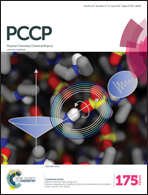From information theory to quantitative description of steric effects
Abstract
Immense efforts have been made in the literature to apply the information theory descriptors for investigating the electronic structure theory of various systems. In the present study, the information theoretic quantities, such as Fisher information, Shannon entropy, Onicescu information energy, and Ghosh–Berkowitz–Parr entropy, have been used to present a quantitative description for one of the most widely used concepts in chemistry, namely the steric effects. Taking the experimental steric scales for the different compounds as benchmark sets, there are reasonable linear relationships between the experimental scales of the steric effects and theoretical values of steric energies calculated from information theory functionals. Perusing the results obtained from the information theoretic quantities with the two representations of electron density and shape function, the Shannon entropy has the best performance for the purpose. On the one hand, the usefulness of considering the contributions of functional groups steric energies and geometries, and on the other hand, dissecting the effects of both global and local information measures simultaneously have also been explored. Furthermore, the utility of the information functionals for the description of steric effects in several chemical transformations, such as electrophilic and nucleophilic reactions and host–guest chemistry, has been analyzed. The functionals of information theory correlate remarkably with the stability of systems and experimental scales. Overall, these findings show that the information theoretic quantities can be introduced as quantitative measures of steric effects and provide further evidences of the quality of information theory toward helping theoreticians and experimentalists to interpret different problems in real systems.


 Please wait while we load your content...
Please wait while we load your content...